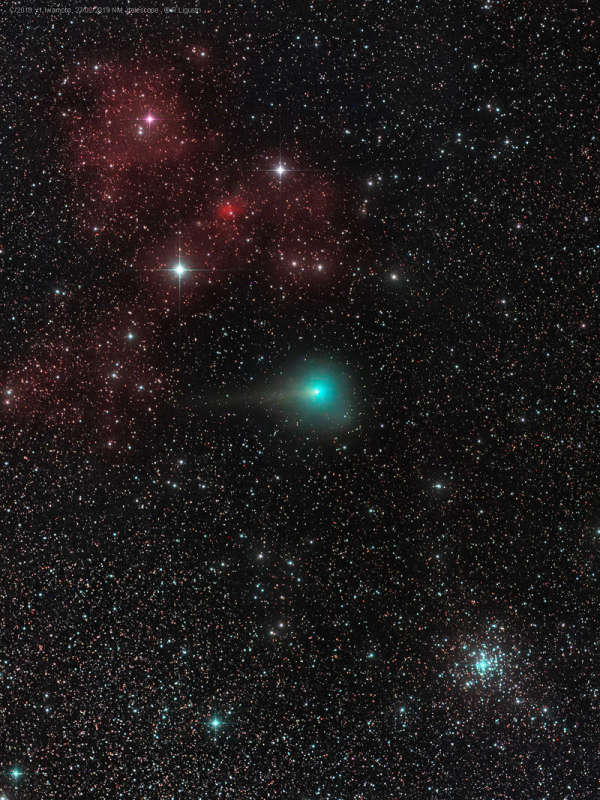Credit & Copyright: Rolando Ligustri
(CARA Project,
CAST)
Explanation:
Still racing
across planet Earth's night skies,
Comet Iwamoto (C/2018 Y1) shares this pretty telescopic
field of view with stars and nebulae of northern constellation
Auriga, the Charioteer.
Captured on
February 27, Iwamoto's greenish coma and faint tail
appear between a complex of reddish emission nebulae and open
star cluster M36 (bottom right).
The reddish emission is light from hydrogen gas ionized by
ultraviolet radiation from hot stars near
the region's giant molecular cloud some 6,000 light-years
distant.
The greenish glow from the
comet, less
than 5 light-minutes away, is predominantly emission from
diatomic carbon molecules fluorescing in sunlight.
M36, one of
Auriga's more familiar star clusters,
is also a background object far beyond the Solar System,
about 4,000 light-years away.
Comet Iwamoto passed closest to Earth on February 12 and is outward
bound in a highly elliptical orbit that will carry it beyond
the Kuiper belt.
With an estimated orbital period of 1,317 years
it
should return to the inner Solar System in 3390 AD.
1999 2000 2001 2002 2003 2004 2005 2006 2007 2008 2009 2010 2011 2012 2013 2014 2015 2016 2017 2018 2019 2020 2021 2022 2023 2024 2025 |
Yanvar' Fevral' Mart Aprel' Mai Iyun' Iyul' Avgust Sentyabr' Oktyabr' Noyabr' Dekabr' |
NASA Web Site Statements, Warnings, and Disclaimers
NASA Official: Jay Norris. Specific rights apply.
A service of: LHEA at NASA / GSFC
& Michigan Tech. U.
|
Publikacii s klyuchevymi slovami:
comet - komety
Publikacii so slovami: comet - komety | |
Sm. takzhe:
Vse publikacii na tu zhe temu >> | |
